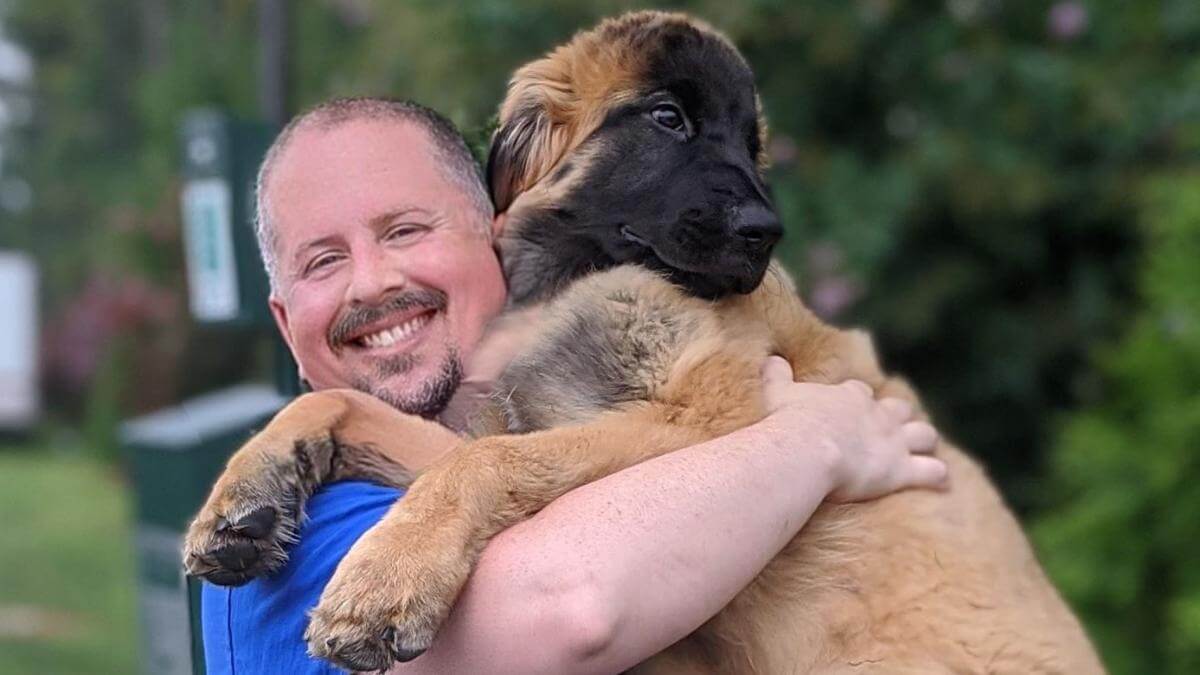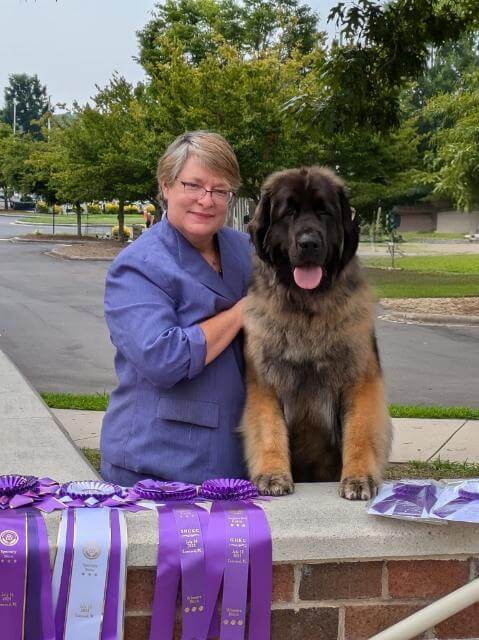
Home » Matt & Susan Townsend | Sforzando Leonbergers

Matt & Susan Townsend
1. Susan and I (Matt) live in Mebane, North Carolina, and we’ve been involved with Leonbergers since 1998 and are Breeders of Merit. We met as undergraduates studying music in Greensboro, and that shared passion for performance is reflected in our kennel name: Sforzando. In music, a sforzando has sudden presence—it commands attention. We strive for that same kind of presence in our dogs: bold, powerful, and unforgettable.
2. The Leonberger is a noble breed with a long neck and proud head carriage. While the breed shares mountain dog ancestry, its silhouette is distinct—balanced and harmonious rather than overly heavy or blocky. For their size, Leonbergers are surprisingly agile and light on their feet. But their head truly defines the breed: when correctly constructed, the Leonberger face radiates warmth, intelligence, and strength. These traits aren’t just aesthetic—they’re the soul of the breed, and essential for preserving the legacy and character.
3. The economic future remains uncertain, and that’s always a factor. But because we breed infrequently and always with the goal of continuing our line, we’re fortunate to have a consistent demand from returning families. Many of our puppy homes come back for their second or third Sforzando Leonberger, and we consider that the highest compliment we could receive as breeders.
4. Technology has made responsible breeding more effective and accessible than ever. Gone are the days of mailing VHS tapes of studs on the move or waiting weeks for photos to arrive by mail. Now, with a production studio in every pocket, high-quality video, movement, and health information can be shared in real time.

Advancements in genetic screening have also helped to reduce the incidence of breed-specific diseases. For Leonbergers, this has been especially impactful in managing polyneuropathy. That said, we believe the community has sometimes overcorrected by excluding recessive carriers from the gene pool—sacrificing genetic diversity in pursuit of simplicity. Overall, though, we’ve made great strides.
Social media has reshaped how we communicate within the fancy. It’s easier than ever to share knowledge, collaborate, and connect with both seasoned breeders and newcomers with an interest in the breed.
5. We still face an uphill battle to preserve our breeds and tell their stories. We’re hopeful that the American Kennel Club (AKC) will invest in programming that celebrates heritage breeds, not just as pets but as cultural artifacts—living expressions of a people, place, and time. Our breeds deserve to be preserved with the same reverence we give to historic homes. They are more than tools—they are legacy.
6. Look around the next time you’re at a show—how many people in their 20s, 30s, or 40s do you see actively participating? We risk losing an entire generation of stewards unless we take deliberate steps to attract and welcome them.
Dog sports offer something truly rare: the chance for a first-day amateur to compete directly alongside seasoned professionals. Unfortunately, too many young people perceive the Conformation world as a zero-sum game where only the insiders win. We need to change that perception—and fast.
If we want to secure the future of our breeds, we need to build a culture of connection, mentorship, and growth. That starts with making the ring a more welcoming and enriching place.
7. The AKC’s introduction of the National Owner-Handled Series (NOHS) and Grand Champion programs has helped to slow our decline in entries and has offered more recognition opportunities for dedicated exhibitors. Club Development’s efforts to strengthen specialties and breed clubs are having a real and lasting impact.
Social media, too, has opened new doors. While it sometimes amplifies division and negativity, it also offers powerful tools for outreach, education, and celebration—if we choose to use them wisely.